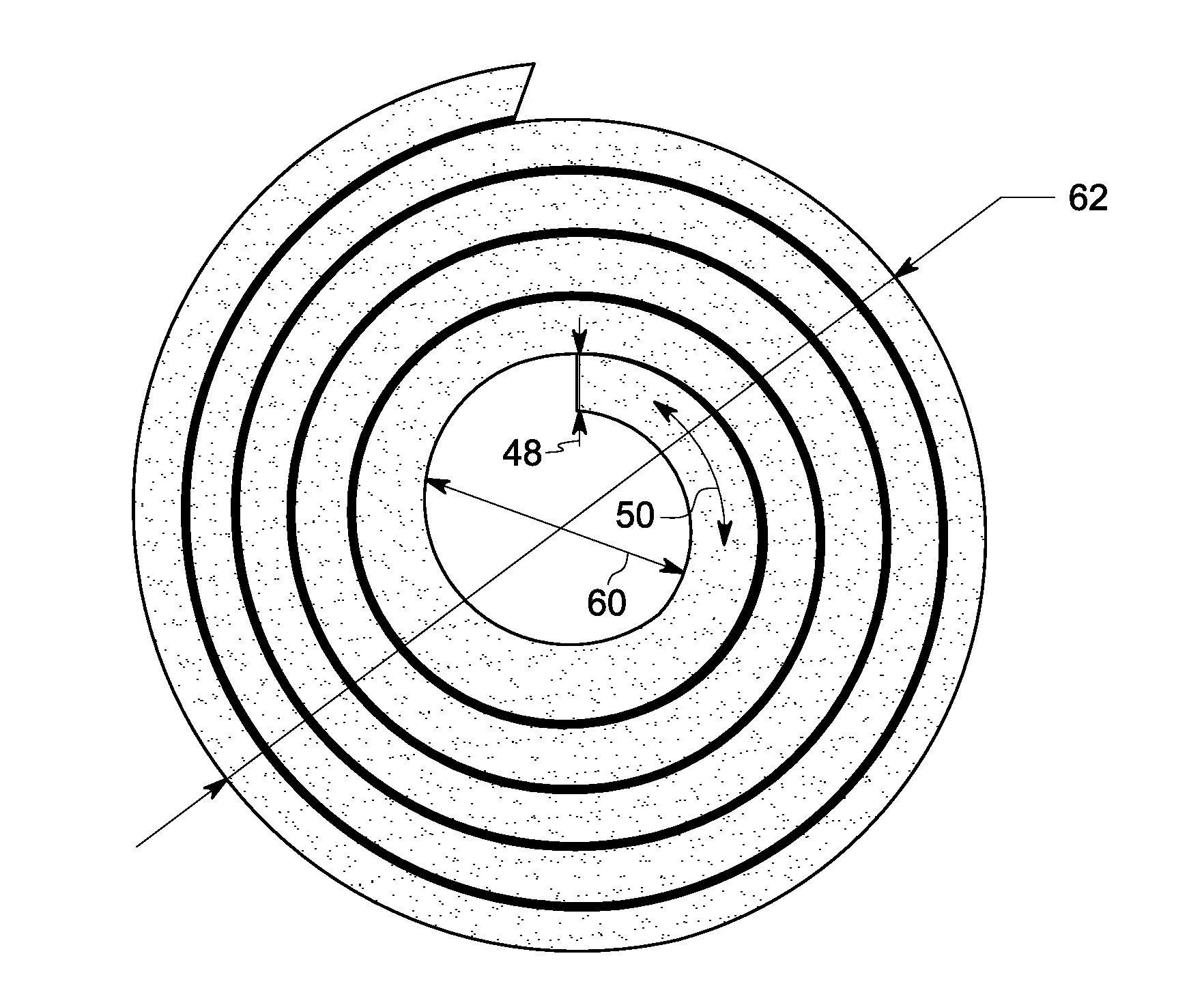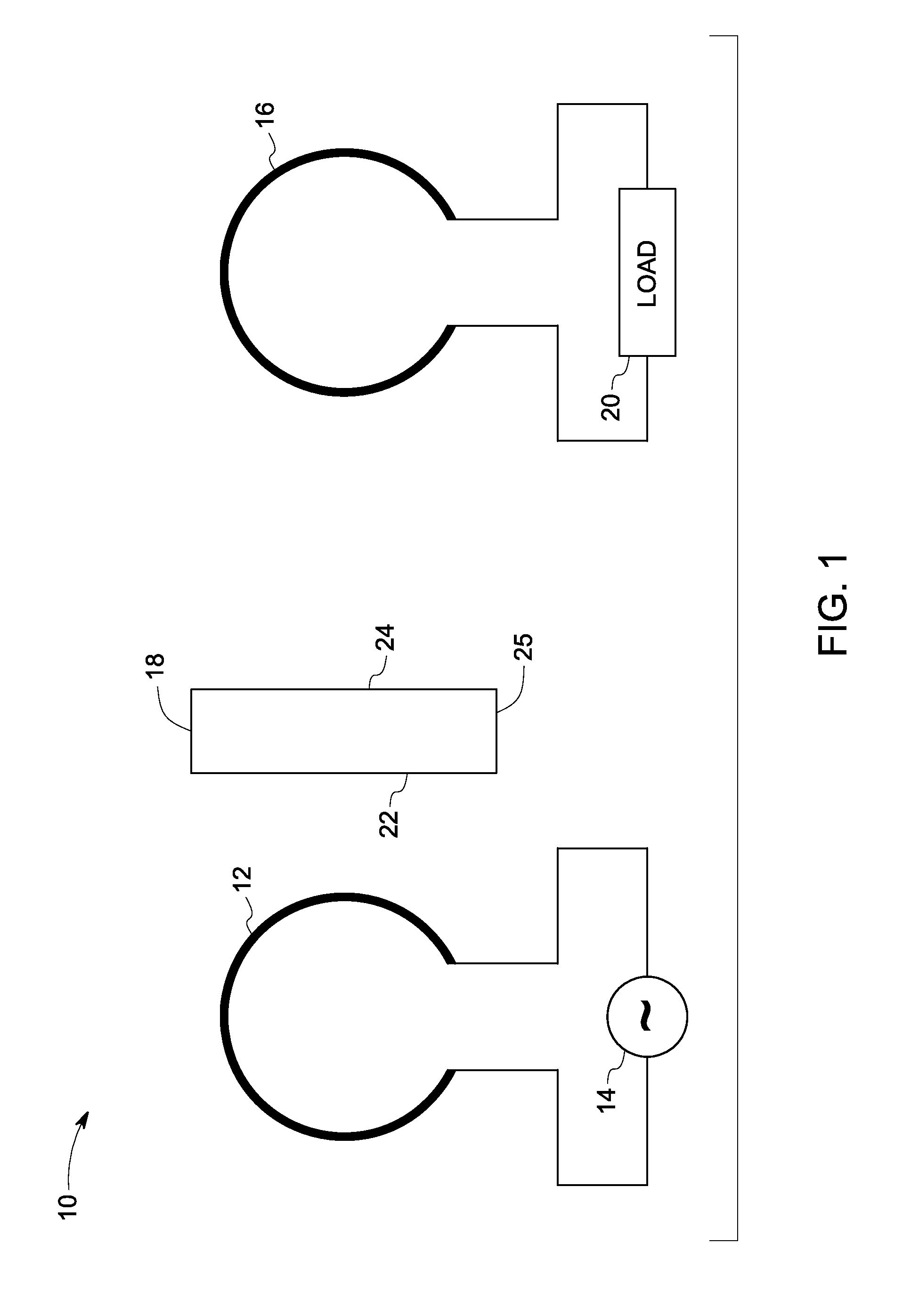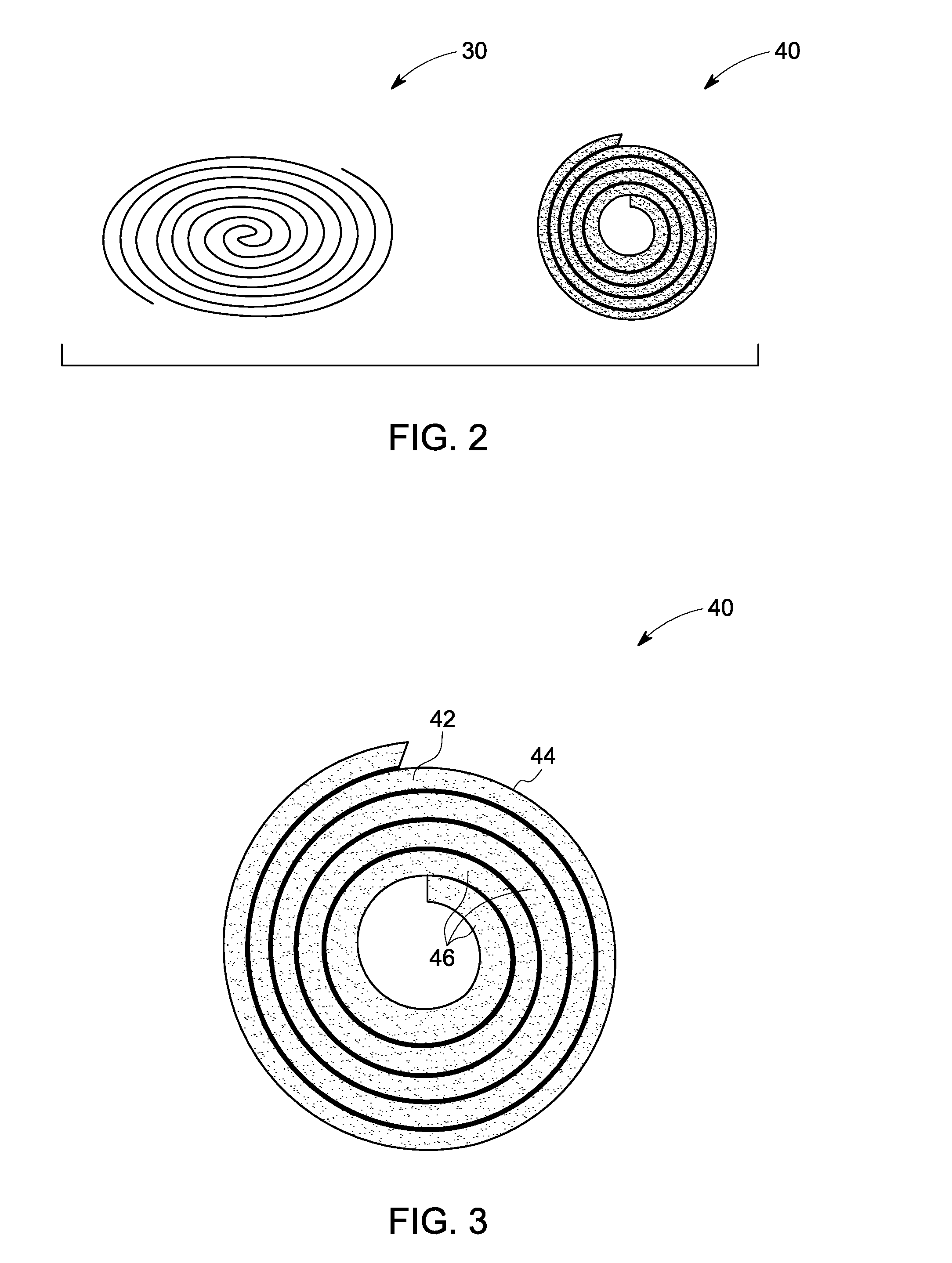Resonator structures and method of making
a resonator and structure technology, applied in the field of resonator structures, can solve the problems of brittle ceramic nature of dielectric materials and challenges the processing of required resonator structures
- Summary
- Abstract
- Description
- Claims
- Application Information
AI Technical Summary
Benefits of technology
Problems solved by technology
Method used
Image
Examples
examples
[0040]The following examples illustrate methods and embodiments in accordance with the invention, and as such, should not be construed as imposing limitations upon the claims.
[0041]In one example, a sintered Swiss-roll structure 94 is prepared using the steps mentioned herein. A copper strip was prepared by cold working. The stresses of the cold worked metal strip were removed by heat treating the metal strip in an argon atmosphere at a temperature about 750° C., and cooling it at a slow rate. In an alternate example, the metallic strip was formed using hot working. The metallic strip formed by cold working or hot working was flattened using a hammer. The metallic surface was further rubbed using an emery paper of grit size 60 to prepare a rough surface configured to have sufficient interactions with the subsequent overlaying ceramic layer. Techniques such as sand blasting could be used alternatively for the surface preparation of metallic strip.
[0042]The surface-prepared metal stri...
PUM
| Property | Measurement | Unit |
|---|---|---|
| Length | aaaaa | aaaaa |
| Thickness | aaaaa | aaaaa |
| Thickness | aaaaa | aaaaa |
Abstract
Description
Claims
Application Information
 Login to View More
Login to View More - R&D
- Intellectual Property
- Life Sciences
- Materials
- Tech Scout
- Unparalleled Data Quality
- Higher Quality Content
- 60% Fewer Hallucinations
Browse by: Latest US Patents, China's latest patents, Technical Efficacy Thesaurus, Application Domain, Technology Topic, Popular Technical Reports.
© 2025 PatSnap. All rights reserved.Legal|Privacy policy|Modern Slavery Act Transparency Statement|Sitemap|About US| Contact US: help@patsnap.com



